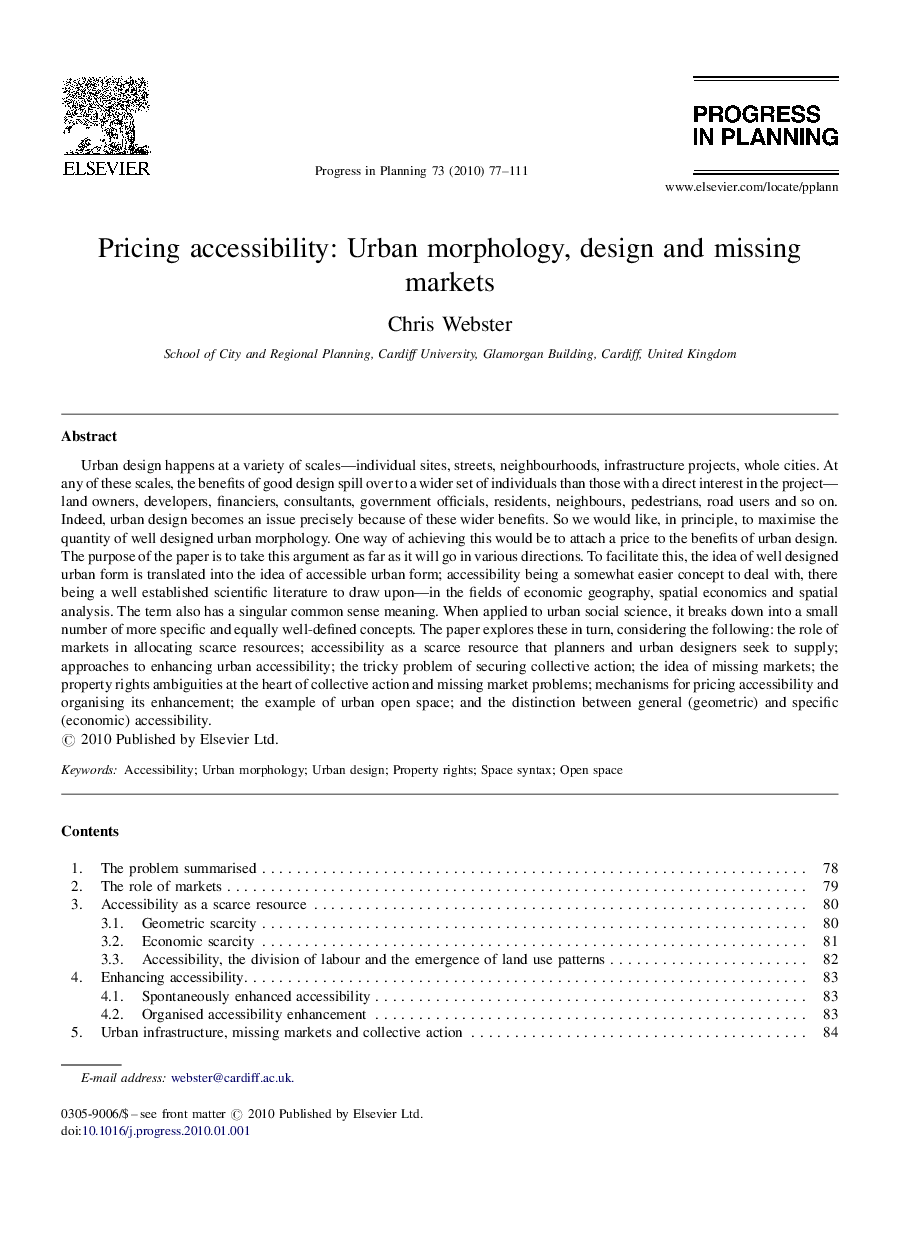| کد مقاله | کد نشریه | سال انتشار | مقاله انگلیسی | نسخه تمام متن |
|---|---|---|---|---|
| 1050924 | 945902 | 2010 | 35 صفحه PDF | دانلود رایگان |

Urban design happens at a variety of scales—individual sites, streets, neighbourhoods, infrastructure projects, whole cities. At any of these scales, the benefits of good design spill over to a wider set of individuals than those with a direct interest in the project—land owners, developers, financiers, consultants, government officials, residents, neighbours, pedestrians, road users and so on. Indeed, urban design becomes an issue precisely because of these wider benefits. So we would like, in principle, to maximise the quantity of well designed urban morphology. One way of achieving this would be to attach a price to the benefits of urban design. The purpose of the paper is to take this argument as far as it will go in various directions. To facilitate this, the idea of well designed urban form is translated into the idea of accessible urban form; accessibility being a somewhat easier concept to deal with, there being a well established scientific literature to draw upon—in the fields of economic geography, spatial economics and spatial analysis. The term also has a singular common sense meaning. When applied to urban social science, it breaks down into a small number of more specific and equally well-defined concepts. The paper explores these in turn, considering the following: the role of markets in allocating scarce resources; accessibility as a scarce resource that planners and urban designers seek to supply; approaches to enhancing urban accessibility; the tricky problem of securing collective action; the idea of missing markets; the property rights ambiguities at the heart of collective action and missing market problems; mechanisms for pricing accessibility and organising its enhancement; the example of urban open space; and the distinction between general (geometric) and specific (economic) accessibility.
Journal: Progress in Planning - Volume 73, Issue 2, February 2010, Pages 77–111